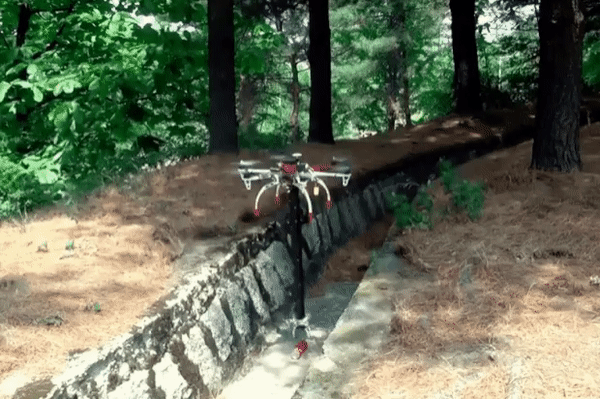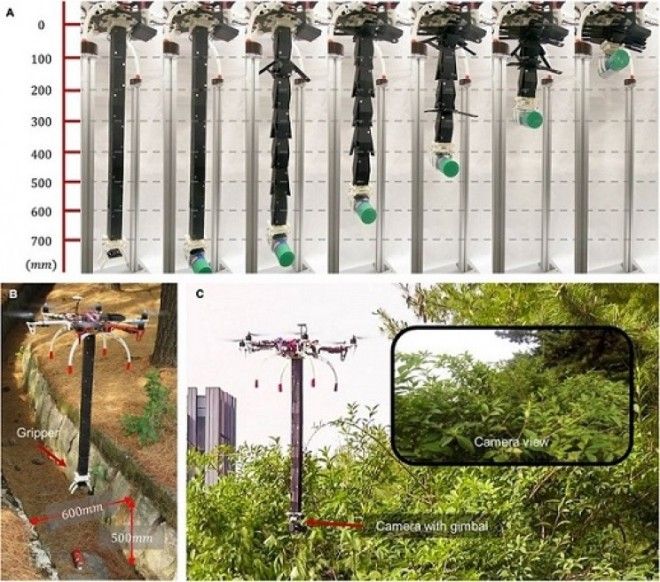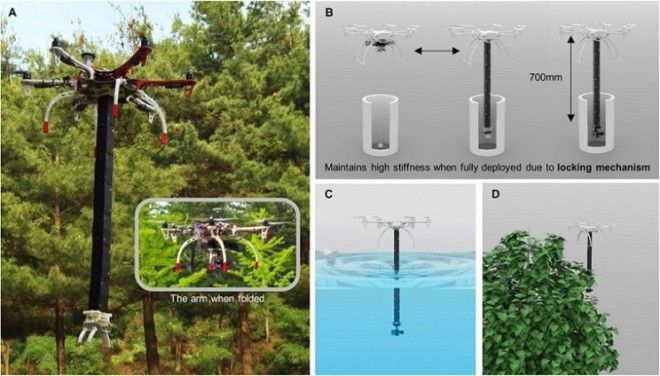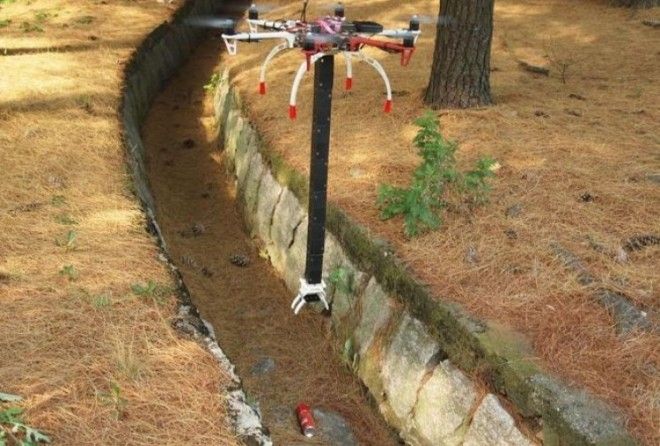A team of scientists based in South Korea have decided to create an attachment that helps drone use their stealth capabilities in a specific way: using folding arms designed for finding and picking up objects onto drones.

The choice was made to equip the robotic arms with foldable actuators—the idea being to create a foldable-, or “origami-robot”, as they are more popularly referred. As the name implies, the arms are molded quickly into rigid rectangular boxes thanks to the clever addition of elastic bands that are also fitted inside the actuators. Once in place, the boxes transform into grabbing appendages that still maintain a good amount of rigidity.

And owing to the bot’s efficient design, a retracted arm measures a mere 40 millimeters and weighs only 285.6 grams, with all its function controlled by a basic electric and wire motor. The drone has a total of 7 arms in all (the team, most likely, was careful not to make the total number of arms to avoid repeated references to spiders, and science fiction creatures) and each arm has an impressive grab of 70 centimeters when fully extended.
In the end, the team was able to produce a drone bot that is “lightweight, compact, and scalable while maintaining its kinematic behavior.”

The details about the foldable robot were published last week in a study, titled “An origami-inspired, self-locking robotic arm that can be folded flat”, in the Science Robotics journal on March 14th.
In discussing the broader future impact of the foldable robot, Kyu Jin Cho, paper co-author and Seoul National University Soft Robotics Research Center Director, explained it very plainly:
“Folding, packaging of everyday things are everywhere,” adding directly, “Why not for robots?”Advertising
What Cho is implying is the endless possibilities of drones that can be tapped into when other technology, design elements, or software is added. The A team at Harvard University’s Wyss Institute for Inspired Engineering at Harvard University used the origami concept last year to make folding robots, opting for the design due to its lightweight and compact design capabilities: “Like origami, one of the main points of our design is simplicity,” shared co-author Je-sung Koh, Ph.D.
Although the initial rounds of testing were an overall success, the team did acknowledge that more work could be done in the area of research and development (R&D), specifically about making the reach of the arms longer for future work. However, they also reported that the overall “design was effective for a findable arm and allowed a UAV (unmanned aerial vehicle) to perform a variety of tasks in a confined space.”
The work of scientists like those who created the foldable robot are also in effect providing an answer to a larger, and very practical, question posed by many critics of drones and drone technology: “Yes, but what else can they do?”

